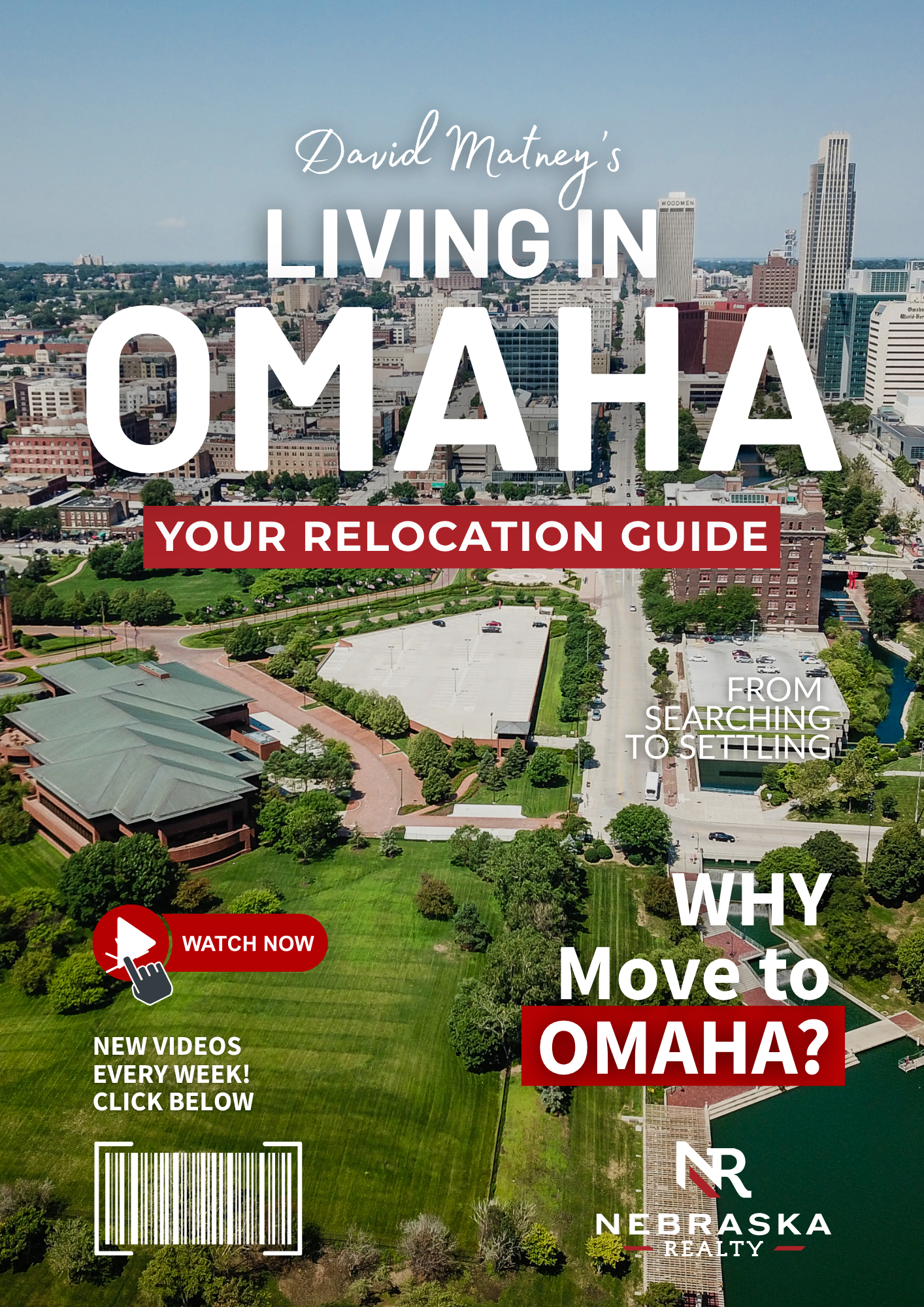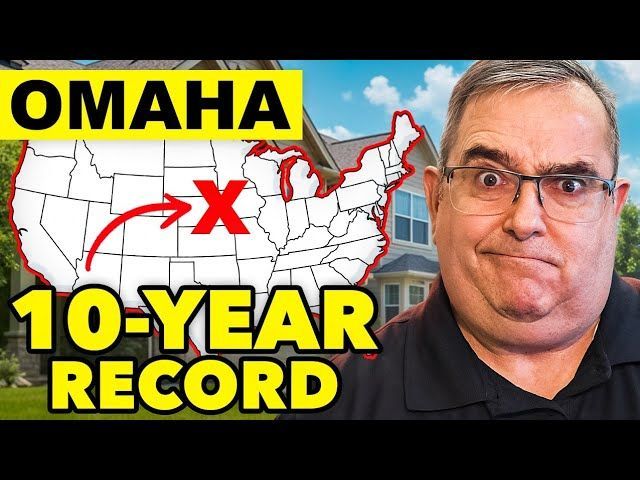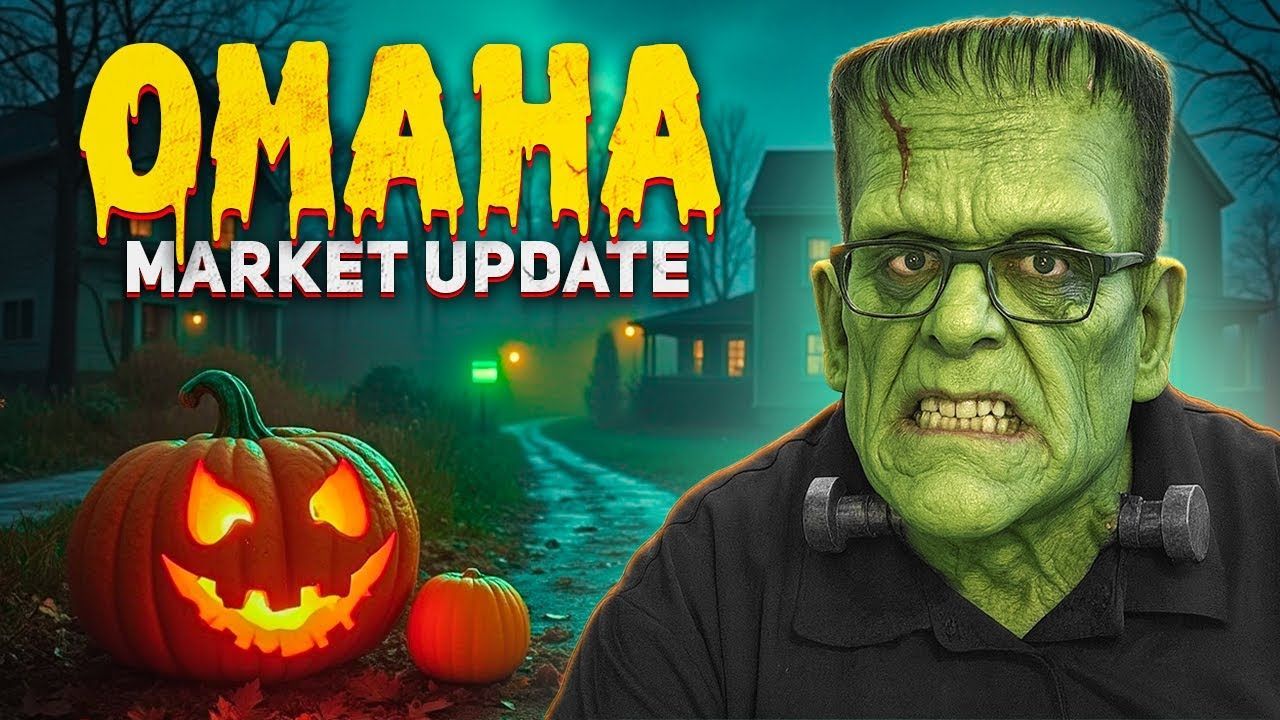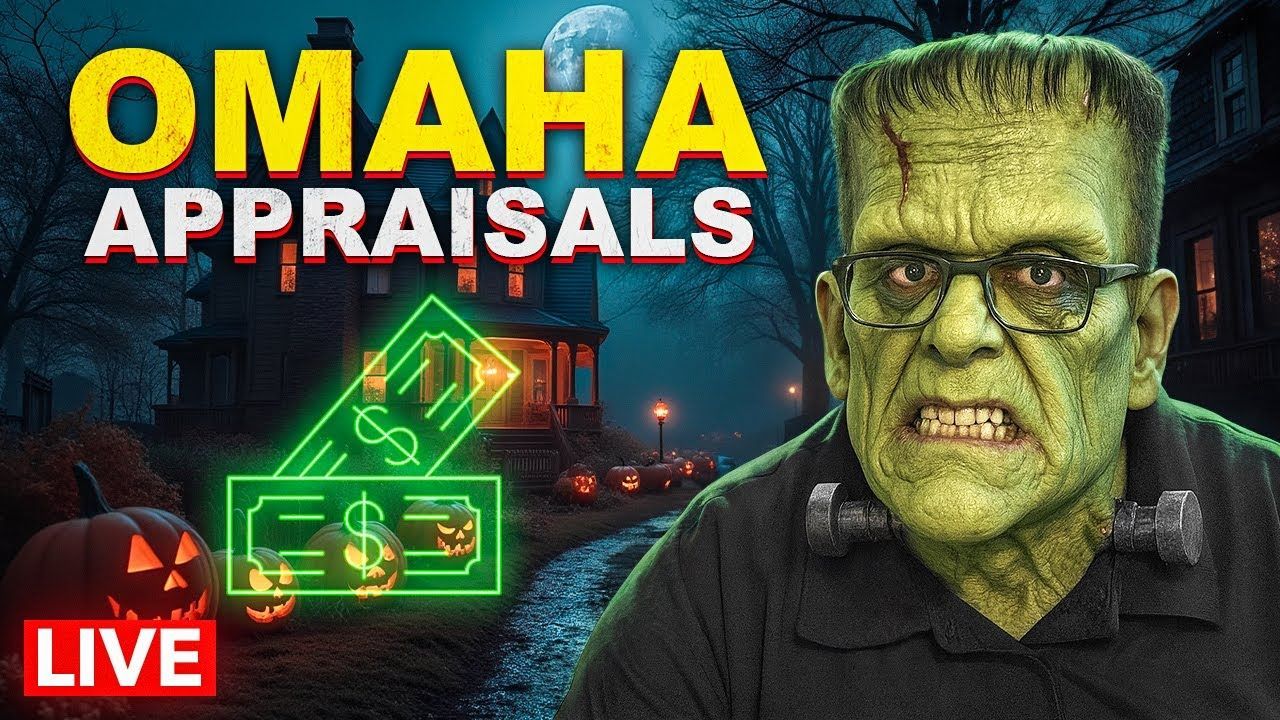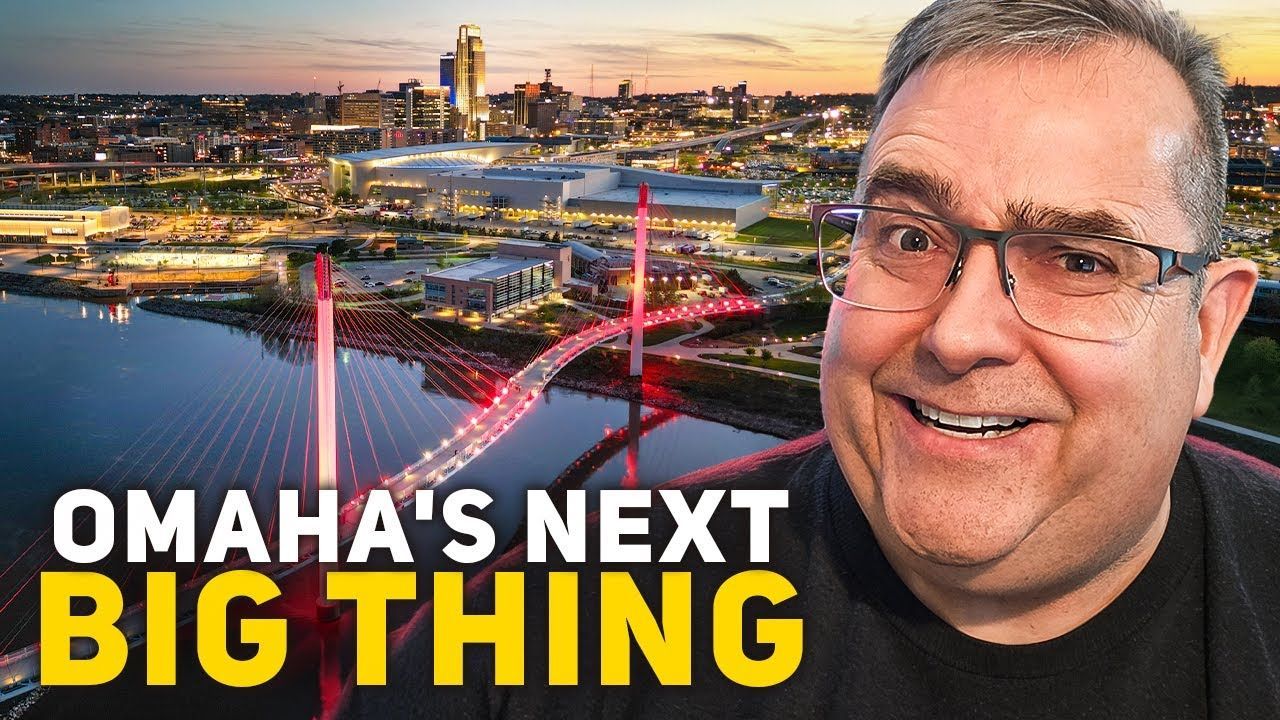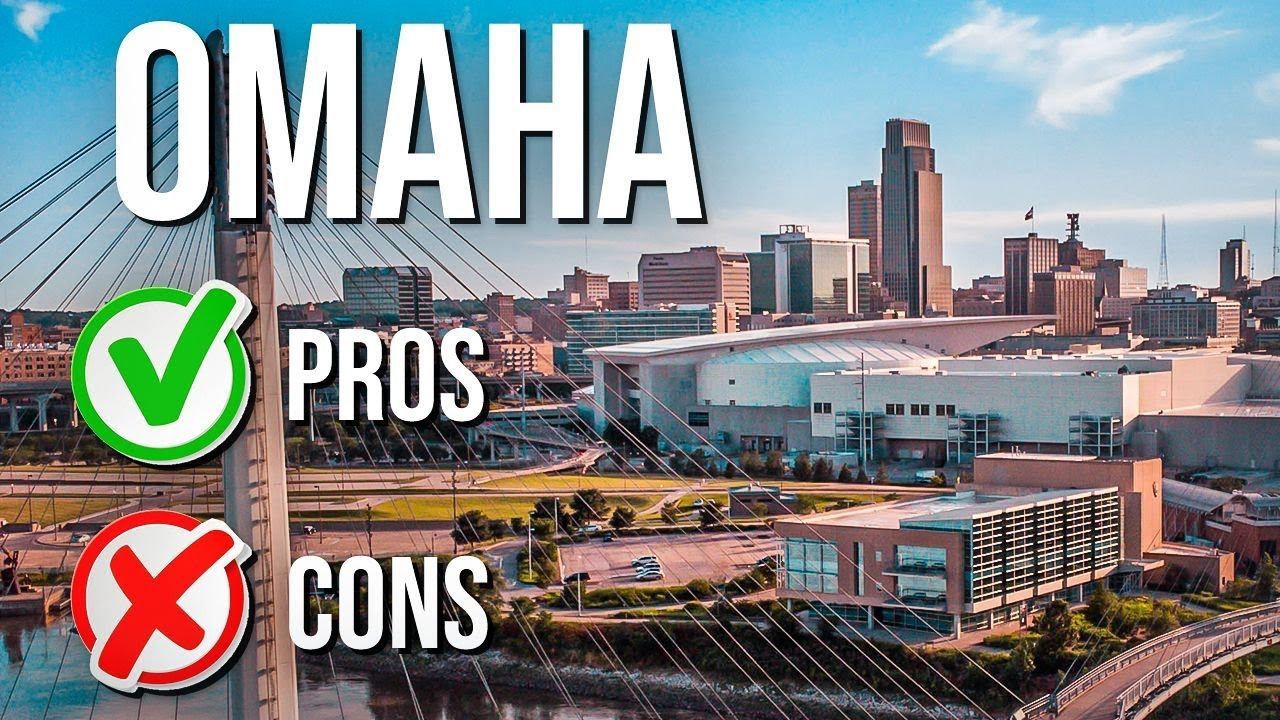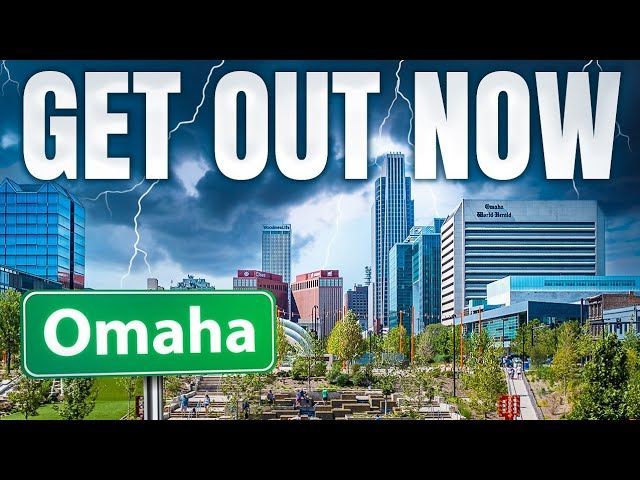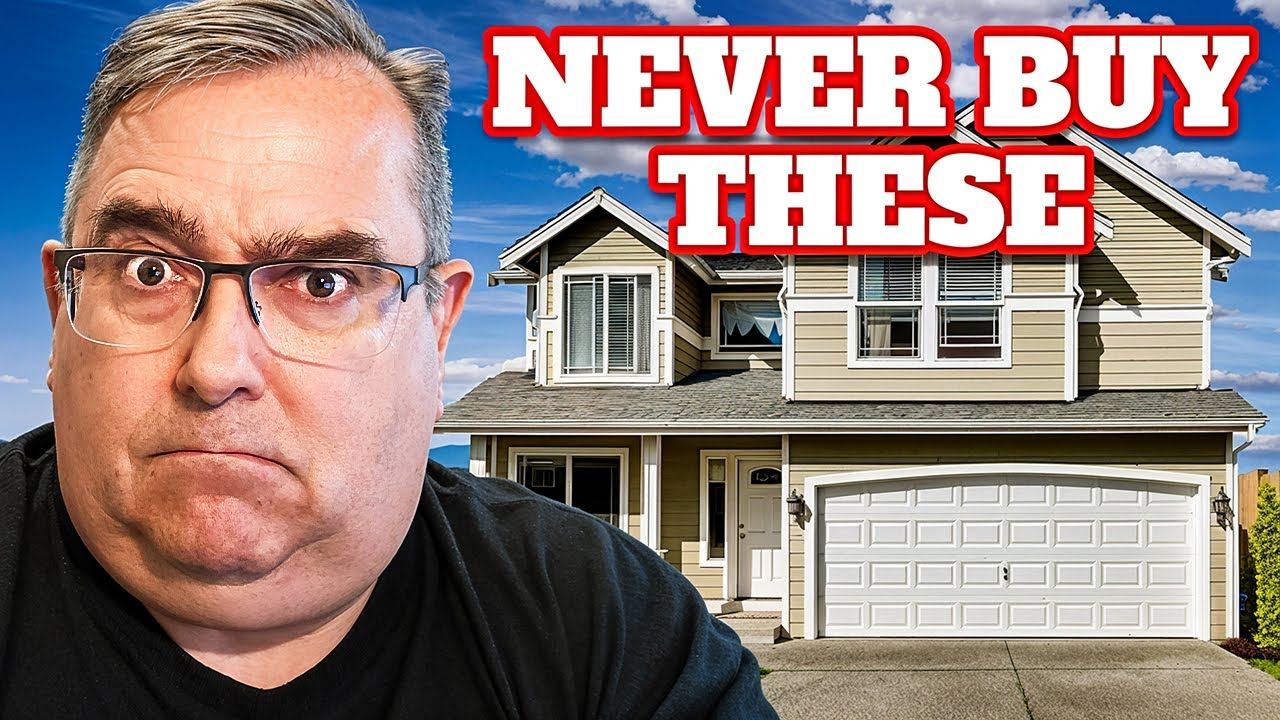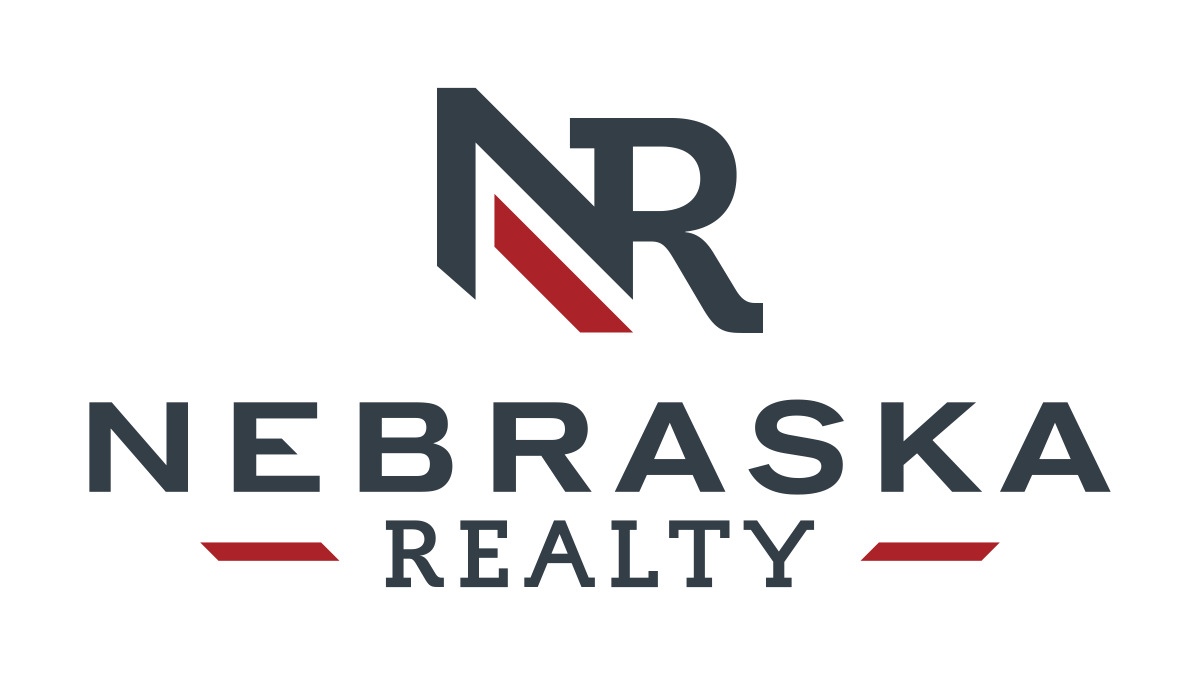If I Were Moving to Omaha in 2025, I'd Move Here!
If you are moving to Omaha, Nebraska in 2025, this guide breaks down the neighborhoods, the mistakes to avoid, and the practical checks you should run before you buy. Whether your priority is walkability and an urban lifestyle, space and top schools, or low maintenance and convenience, the right neighborhood will make your move smooth and your home a better investment. Read on to learn the lessons I learned, the exact places I would choose today, hidden gems locals love, and one inspection that can save you thousands when buying an older home in Omaha.
Table of Contents
- Introduction: Lessons From Living in Omaha, Nebraska for 26 Years
- Part 1: What I’d Do Differently If I Were Buying a Home in Omaha in 2025
- Part 2: Best Walkable and Urban Neighborhoods in Omaha for 2025
- Part 3: Top Suburbs for Families Moving to Omaha, Nebraska in 2025
- Part 4: Best Low-Maintenance Living Options in Omaha, NE
- Part 5: Hidden Gem Neighborhoods in Omaha You Shouldn’t Overlook
- FAQs About Moving to Omaha, Nebraska in 2025
- Final Thoughts: How to Choose the Right Omaha Neighborhood for You
Introduction: Lessons From Living in Omaha, Nebraska for 26 Years
Moving to Omaha, Nebraska in 2025 is exciting, but it pays to be deliberate. I lived in my current neighborhood for over two decades and learned three hard lessons I want you to avoid. Those lessons shaped the way I would choose a home today if I were moving to Omaha, Nebraska in 2025. I will cover the practical details to watch for when touring homes, why schools matter even if you do not have kids, why representation matters, and why new construction deserves a seat at your table.
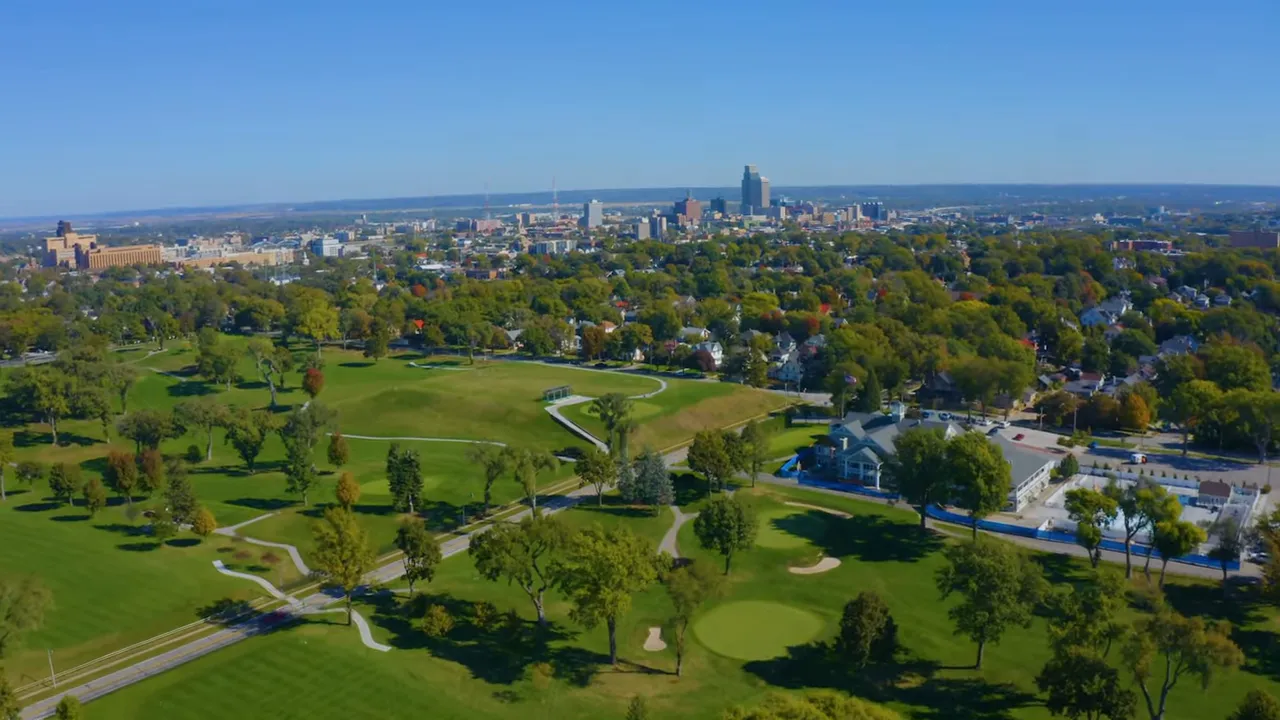
VIEW HOMES FOR SALE IN OMAHA, NEBRASKA
Part 1: What I’d Do Differently If I Were Buying a Home in Omaha in 2025
Where I live now and what I have learned. My family and I lived in Westwood Heights for more than 26 years. When we bought the house, it checked the boxes: affordable, centrally located, close to shopping and schools, and easy access to the interstate. With hindsight, however, I would have made a different choice if I were moving to Omaha, Nebraska in 2025.
Lesson 1: Pay attention to details
Small details become big problems over time. For example, a creek running through a neighborhood can look harmless at a showing but fill up fast during heavy rains. Just because a house does not require flood insurance today does not mean there is no flood exposure. Look at topography, low spots, and historic flood data. On another note, proximity to railroad tracks creates ongoing noise and vibration issues. Omaha grew up around the rails, and tracks exist throughout the city. Finally, avoid homes that sit on or back up to busy streets. Traffic noise, safety concerns, and long-term resale issues often stem from that choice.
Lesson 2: Schools matter even if you don't have kids
When we bought our home we did not have kids, so schools were not a priority. Over time it became clear that school quality drives neighborhood demand and resale value. Good schools create steady demand and stronger appreciation. If you are moving to Omaha, Nebraska in 2025, research every school and district you are considering. A great resource is the Nebraska Department of Education profile page, which contains report cards on every district and school in the state. Also be conscious that school boundaries can change, especially in rapidly developing areas of Southwest Omaha. Verify boundaries and district assignments if they matter to your purchase decision.
Lesson 3: Representation matters
We called the agent listed on the sign when we bought our house. That agent represented both buyer and seller, a situation known as dual agency. At the time I did not know better. If I were moving to Omaha, Nebraska in 2025, I would insist on my own buyer representation. A dedicated buyer agent looks out for your interests, may spot issues you overlook, negotiates on your behalf, and helps coordinate inspections and contingencies that protect you.
Bonus lesson: Consider new construction
We did not consider new construction when we bought. Omaha has an affordable new construction market that deserves attention. New homes are more energy efficient, built to current codes, and often cheaper to maintain in the first years. If new construction fits your budget, keep it in your search. It can save money and headaches on maintenance and utilities for years to come.
Part 2: Best Walkable and Urban Neighborhoods in Omaha for 2025
If your priority when moving to Omaha, Nebraska in 2025 is a more urban lifestyle and walkability, two neighborhoods stand out: the Old Market and the Blackstone District. Both deliver culture and connection at the expense of space and parking. If you value experiences over square footage, these are the places to consider.
The Old Market: history, walkability, and charm
The Old Market is Omaha's historic core. Brick paved streets, converted lofts, rooftop patios, art galleries, vibrant restaurants, bars, and nightlife define the area. If you work downtown—especially at new centers of employment—you might be able to walk to work. The riverfront, museums, and downtown amenities are a few steps away.
Pros: walkable, full of culture, historic charm. Cons: condos tend to be pricier per square foot, parking is limited, and living spaces are smaller than suburban homes. If you are moving to Omaha, Nebraska in 2025 and you want downtown living, expect a trade-off between convenience and space.
Blackstone District: foodie culture and urban energy
The Blackstone District, centered at 40th and Farnam, used to be West Omaha around 1915. In the past 20 years the neighborhood has been transformed into a foodie and nightlife hub. Coffee shops, craft beer, trendy restaurants, and boutique shops line the area. It sits minutes from Midtown Crossing and Turner Park and the streetcar is poised to boost connectivity and demand.
Pros: energy, a mix of historic and modern housing, central location. Cons: parking can be tight, prices are higher than many neighborhoods, and the area is active—sometimes noisy. If you value connection and culture more than square footage and want to be part of Omaha's vibrant scene, Blackstone deserves a serious look when moving to Omaha, Nebraska in 2025.
Part 3: Top Suburbs for Families Moving to Omaha, Nebraska in 2025
If your focus is space, community amenities, and strong schools, the suburbs around Omaha are excellent choices. For many families moving to Omaha, Nebraska in 2025, suburbs offer long-term stability and room to grow. Two places I would consider are Papillion and Elkhorn. These areas combine top-rated schools, parks, and family-focused communities.
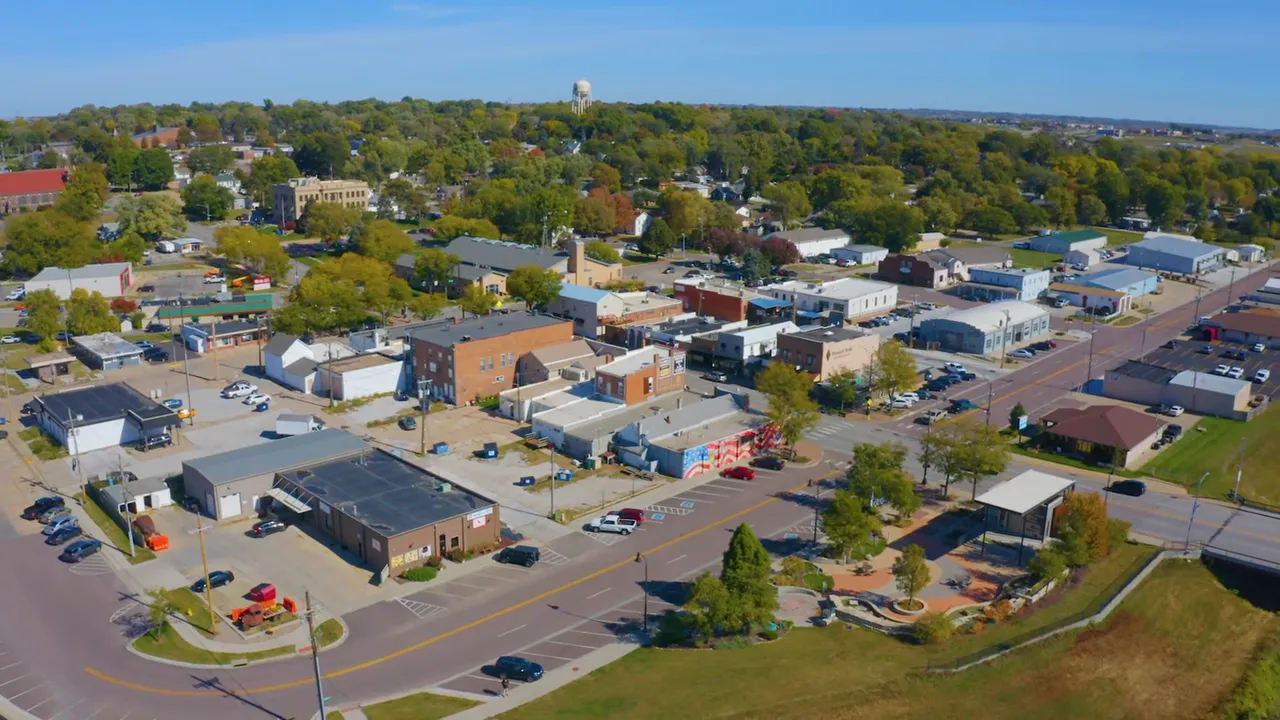
Papillion: community, parks, and access to Offutt
Papillion sits just southwest of Omaha and is its own city in Sarpy County. It consistently ranks as one of Nebraska's best suburbs. The area offers parks, community events, and access to Offutt Air Force Base—it's roughly a 15-minute drive. If military assignments or government work sends you to Offutt, Papillion should be high on your list.
Pros: abundant parks, high-performing schools, strong sense of community, and local landmarks like Warner Park and Nebraska's Vietnam Veterans Memorial. Papillion has also attracted significant investment, including major data center developments from large tech companies. Cons: the suburb is growing fast, which means more traffic and steadily higher home prices. Commuting to downtown Omaha is longer than from inner neighborhoods, but Omaha remains a city where many commutes stay near 30 minutes.
Elkhorn: new neighborhoods and room to grow
Elkhorn sits on Omaha's west side and was annexed by the city in 2005. It has seen rapid expansion, with many new neighborhoods and schools that earn strong state marks. If you want modern homes with larger yards and neighborhood amenities geared toward families, Elkhorn is a great bet.
Pros: newer homes, more yard space, and room for family life. Cons: prices tend to be higher than older neighborhoods and you will face longer drives to downtown. These suburbs are long-term bets: community, space, and demand stability make them ideal for families thinking long term while moving to Omaha, Nebraska in 2025.
Part 4: Best Low-Maintenance Living Options in Omaha, NE
If simplicity and low maintenance are top priorities—perhaps you are nearing retirement or you want a lock-and-leave lifestyle—Midtown Crossing and villa communities in West Omaha are the two paths I would explore. Both reduce the chores around ownership and increase convenience.
Midtown Crossing: urban convenience with low maintenance
Midtown Crossing sits near 33rd and Farnam and looks over Turner Park. If you dislike mowing and shoveling, consider a condo in Midtown Crossing. Newer condo developments help minimize the risk of immediate capital repairs and major assessments, though no development is immune to future HOA challenges. In Midtown Crossing you are steps from restaurants, shopping, and medical centers, and soon you will have streetcar access.
Pros: lock-and-leave lifestyle, walkable access to entertainment, and close proximity to medical care. Cons: HOA dues can be high and grocery options are limited compared with suburban shopping centers. If you are moving to Omaha, Nebraska in 2025 and want an easy urban lifestyle without yard work, Midtown Crossing is a top choice.
Villas in West Omaha: the middle ground
A villa is a different take on low maintenance living. Think of it as a private ranch-style home with HOA-managed exterior care. If you want to travel without worrying about a lawn, a villa gives you the privacy of a house with many of the conveniences of condominium living. Ranch villas are especially good for aging in place since everything is on one level.
Pros: lower maintenance, newer builds, and energy efficiency. Cons: these communities can be further west, less walkable, and still subject to HOA rules and fees. For retirees or buyers prioritizing simplicity, villas are a strong choice when moving to Omaha, Nebraska in 2025.
Part 5: Hidden Gem Neighborhoods in Omaha You Shouldn’t Overlook
Not every neighborhood makes the headlines. Locals know several hidden gems that offer character, affordability, and proximity to downtown amenities. Two of those neighborhoods are Aksarben and Benson. They are popular with first-time buyers and investors. When exploring older neighborhoods, do one extra inspection that can save you thousands: the sewer scope.
Aksarben: character, location, and UNO access
Aksarben, Nebraska spelled backwards, sits near 60th and Center. Homes here were built from the 1920s through the 1940s and tend to be smaller with one-car garages. Buyers love the character, the location near the interstate, and proximity to the University of Nebraska at Omaha and the medical center. The neighborhood is also home to Baxter Arena and UNO Mavericks events.
Aksarben is a perennial hot market because its central access and affordability attract both buyers and investors. If you are moving to Omaha, Nebraska in 2025 and you want character within a short drive to downtown, Aksarben is worth touring. Just be smart about inspections.
Benson: revitalized, artistic, and affordable
Benson is located near 60th and Maple and began as a small town in 1887 before being annexed by Omaha in 1917. Today Benson is an artsy, creative hub with live music, bars, restaurants, and vintage shops. It has personality, affordable housing options, and convenience to UNO and the medical center. Benson appeals to first-time buyers and investors who want value close to the core.
Both Benson and Aksarben feature homes built in the early to mid 20th century. Those older homes require additional inspections beyond a standard home inspection.
The one inspection that can save you thousands: the sewer scope
In many older Omaha neighborhoods, sewer lines are constructed of clay sections. Mature trees in these neighborhoods can send roots into the joints where these clay sections meet, leading to clogs or serious damage. A clogged or damaged main sewer line can require replacement and cost up to about $20,000 depending on the depth and length of replacement. A sewer scope inspection involves running a camera through the main sewer line to check for tree roots, breaks, and blockages. The cost is typically around $250, and it is the best $250 you will spend when buying an older home.
If you are moving to Omaha, Nebraska in 2025 and considering a home built before 1970, make a sewer scope part of your inspection plan. It is simple, fast, and can prevent a major surprise after closing.
Practical reminders when choosing a neighborhood
- Check floodplains and neighborhood drainage history before you buy.
- Confirm school assignments and district boundaries, especially in new developments.
- Hire your own buyer representation. Do not rely on the listing agent to represent your interests.
- Consider new construction as part of your search if it fits your budget.
- Get specialized inspections for older homes, including sewer scopes.
Moving to Omaha, Nebraska in 2025 is a great opportunity. Pick the wrong spot and you might end up with a long commute, schools that do not match your plans, or higher maintenance costs than expected. Choose carefully and you will find a neighborhood that fits your lifestyle, budget, and long-term goals.
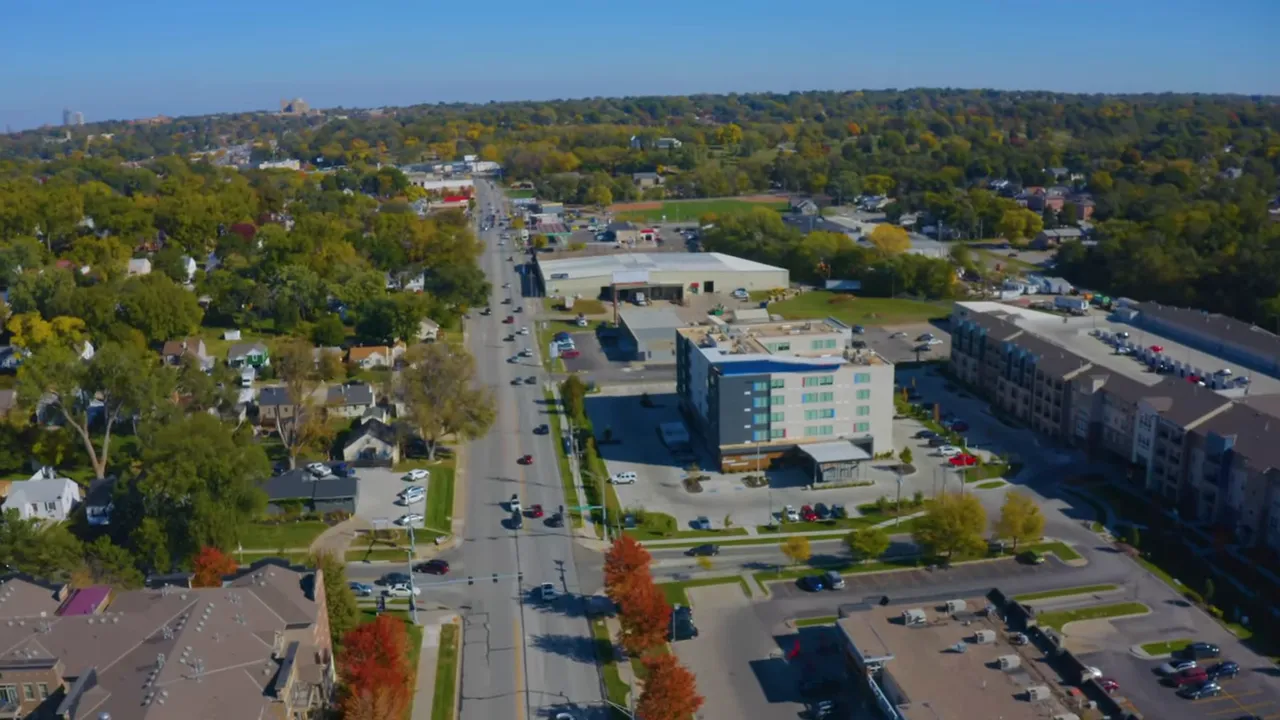
VIEW HOMES FOR SALE IN OMAHA, NEBRASKA
FAQs About Moving to Omaha, Nebraska in 2025
What neighborhoods should I prioritize if I want walkability and nightlife when moving to Omaha, Nebraska in 2025?
The Old Market and the Blackstone District are the top choices for walkability and nightlife. The Old Market offers historic charm, brick streets, and proximity to the riverfront. Blackstone is a redeveloped area with restaurants, coffee shops, and a vibrant food scene. Both are central, cultural, and less focused on large yards or parking space.
Where should families look for top schools and community amenities when moving to Omaha, Nebraska in 2025?
Papillion and Elkhorn are excellent suburban choices. Papillion has many parks, community events, and is near Offutt Air Force Base. Elkhorn offers newer neighborhoods, larger yards, and strong school performance. Both provide family-oriented amenities and stable long-term demand.
I want low maintenance—what are my best options when moving to Omaha, Nebraska in 2025?
Consider Midtown Crossing condos for an urban lock-and-leave lifestyle or a villa in West Omaha for single-level living with HOA-managed exterior services. Both options reduce yard work and exterior maintenance, but expect HOA fees and less private outdoor space than a detached suburban home.
Do I need to worry about flooding if a home is not in a flood zone when moving to Omaha, Nebraska in 2025?
Yes. Not being in a designated flood zone does not eliminate flood risk. Look at nearby creeks, drainage paths, and history of heavy rains. Ask neighbors about stormwater behavior and check local flood history maps and reports before you commit.
What inspections are essential for older homes in Omaha?
In addition to a standard whole-house inspection, get a sewer scope when buying in older neighborhoods like Benson and Aksarben. Tree roots and clay sewer sections can cause mainline damage that costs up to tens of thousands to repair. The sewer scope costs about $250 and can reveal problems before you buy.
Should I consider new construction when moving to Omaha, Nebraska in 2025?
Yes, if it fits your budget. New construction is built to modern energy codes, usually requires less maintenance in the short term, and can be more energy efficient. Balance the advantages against location preferences, lot size, and commute times when deciding.
How long are commutes in Omaha compared with other cities?
Omaha typically has shorter commutes than many large metro areas. It is common to get across town in about 30 minutes, although commutes increase when moving farther out to suburbs like Elkhorn or Papillion. Always test commute times during peak hours before committing to a location.
Is dual agency a problem when buying a home in Omaha?
Dual agency, where one agent represents both buyer and seller, can create conflicts of interest. For confident negotiation and clear advocacy, hire your own buyer agent to represent your interests exclusively when moving to Omaha, Nebraska in 2025.
What are two affordable neighborhoods with character near downtown Omaha?
Aksarben and Benson both offer affordable options with character. Aksarben is close to UNO and the medical center, while Benson is an artsy neighborhood with vintage shops and live music. Both appeal to first-time buyers and investors, but remember to schedule a sewer scope for older homes.
Final Thoughts: How to Choose the Right Omaha Neighborhood for You
Moving to Omaha, Nebraska in 2025 means balancing lifestyle, budget, and long-term value. If you want downtown energy, focus on the Old Market and Blackstone. If you want family-friendly suburbs with strong schools, Papillion and Elkhorn are excellent. If low maintenance and simplicity matter, look at Midtown Crossing or villa communities in West Omaha. And if you love character and affordability, do not overlook Aksarben and Benson—just be sure to add a sewer scope to your inspection list.
Make a checklist before you tour homes: flood risk, noise sources, school assignments, representation, options for new construction, and sewer scope for older homes. Thoughtful planning prevents surprises and makes your move to Omaha, Nebraska in 2025 both successful and rewarding.
If you are planning a move in 2025, call/text me at 402-490-6771 or book a call in my calendar . Make the inspections part of your offer and prioritize the neighborhood that fits your lifestyle and long-term goals. Your ideal Omaha neighborhood is out there; pick it wisely.
DAVID MATNEY
David Matney is a trusted Realtor® and local expert with over 20 years of experience in Omaha’s real estate market.

